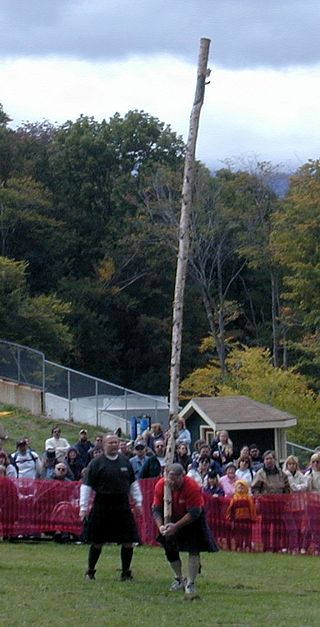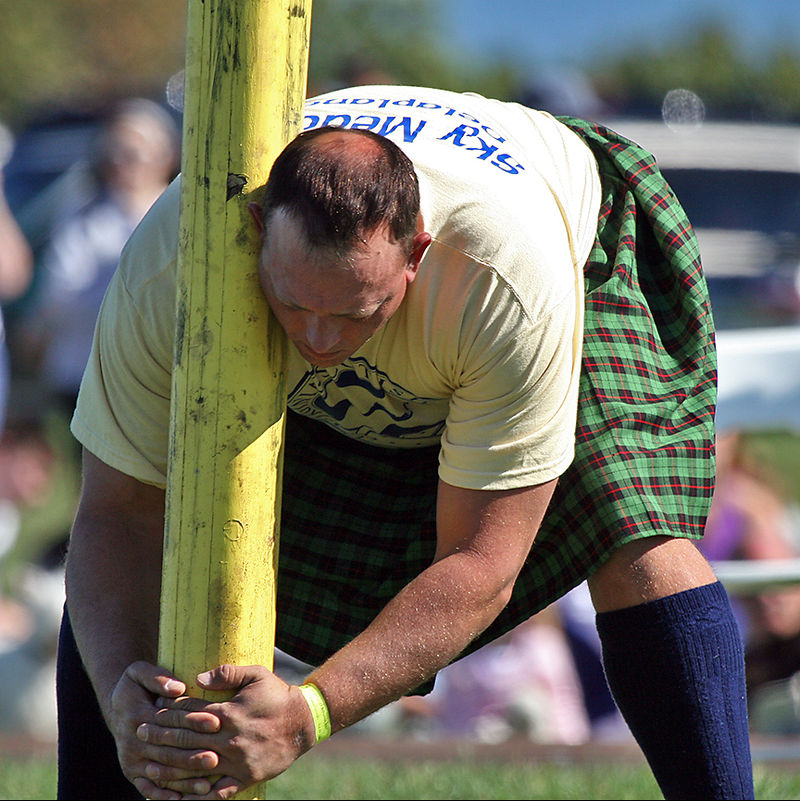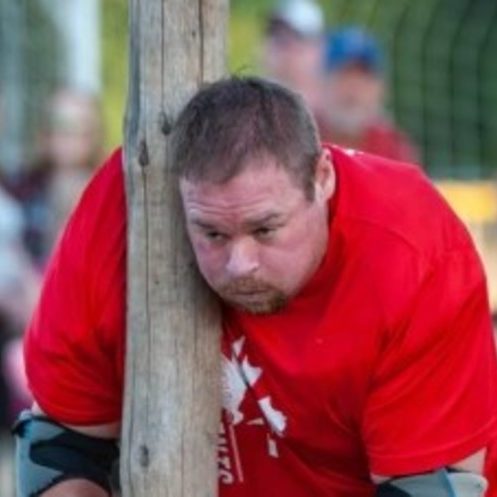The hero of my latest release, Kilted Lover, tosses cabers at the Scottish Games. I thought it would be fun to take a look back at the history of the caber toss and see why it was invented.
But first, what is the caber toss? It is a heavy athletic event at Highland/Scottish Games. A caber is a 15 – 23 feet long log, usually peeled, weighing between 70 and 200 pounds (depending on who you ask, and the type of tree). The athlete squats with his feet flat on the ground and wedges the caber between his shoulder and neck, pushes upward with his hands, and lifts it slightly, just enough to slide his interlocked hands beneath the smaller end. (During the event, no one can assist him in lifting it.) Then, with the caber resting against his shoulder, he lifts and stands upright. He must balance the log in the air. Remember, the heavier, larger end of the log is up, so he may stagger around a bit until it is balanced. He takes a short run forward and flips the log in the air. He must make the large end hit the ground and the small end flip over and land straight ahead, away from him. This is an event of accuracy rather than distance, so it doesn’t matter how far he throws it. For the best score, the small end of the caber needs to land at the 12 o’clock position, straight out from the thrower.
Caber tossing, also called turning the caber, or the “tossing (or casting) of ye barr” was first recorded as an athletic event in Scotland at a 1574 “wappinschawes” (weapon-showings) which were sporting contests of strength, agility and speed which related to military prowess.
As for the history of caber tossing… Round Hill Highland Games website says: “The history of the caber is elusive. The term ‘caber’ derives from the Gaelic word “cabar” or “kaber” which refers to a rafter or beam. The most prominent legend surrounding the origin of the caber toss is that of breaching barriers or crossing streams during wartime. In the Scottish highlands, you often have freezing-cold streams that you need to cross. During battle, the caber was tossed from one side of the stream to the other to quickly make a bridge, allowing fellow Scotsmen to cross and continue on to chase rival clans. This is why the caber is tossed for accuracy, rather than distance.”
This makes perfect sense. Scotland is a very wet place, with many lochs, bogs and streams. It would take lots of practice and great skill to put the caber exactly where it needed to be, across the stream, and not in the stream where it might float away.




